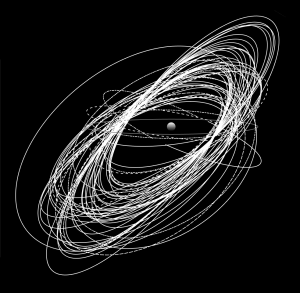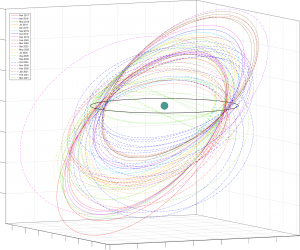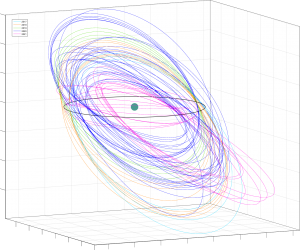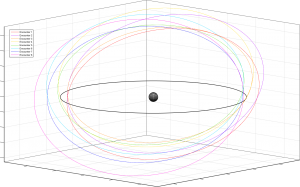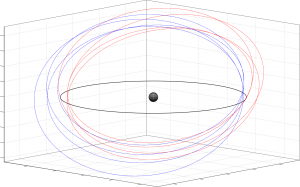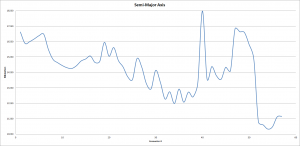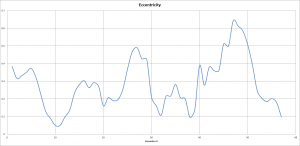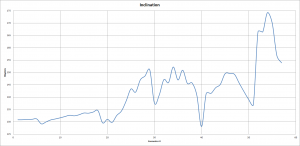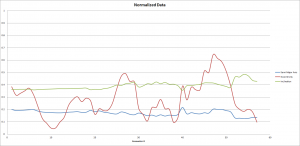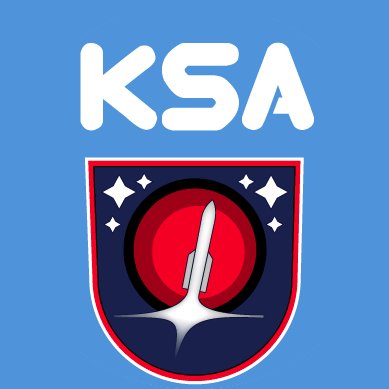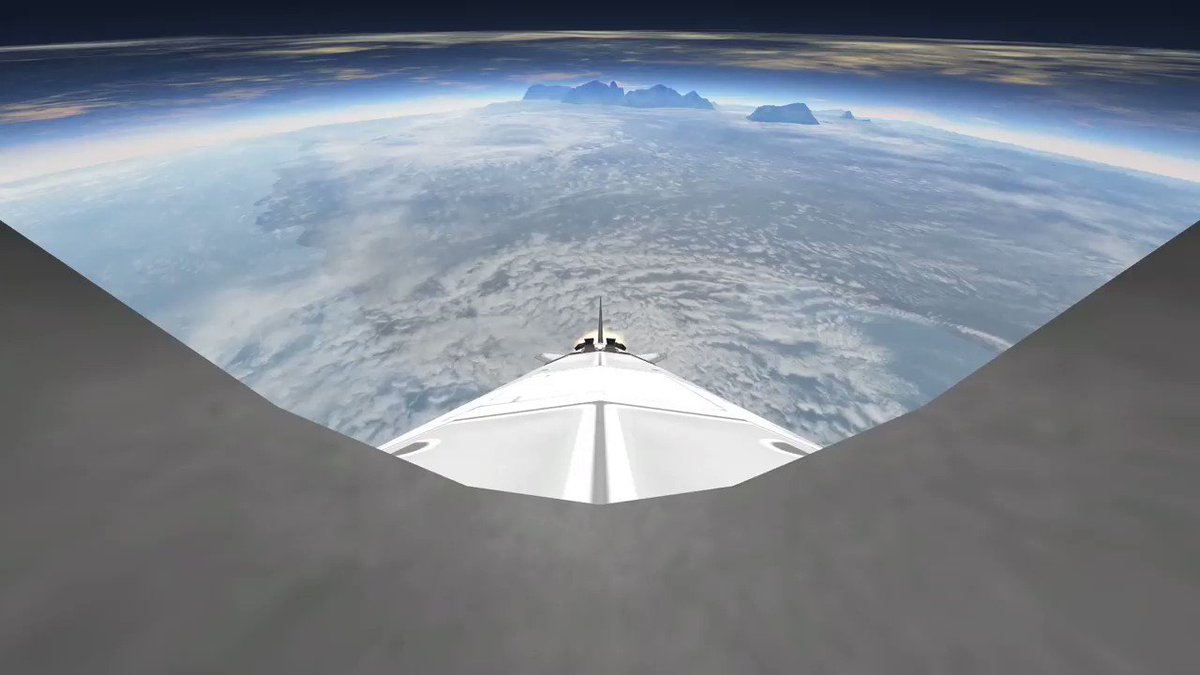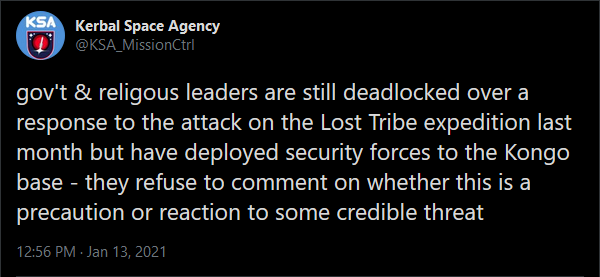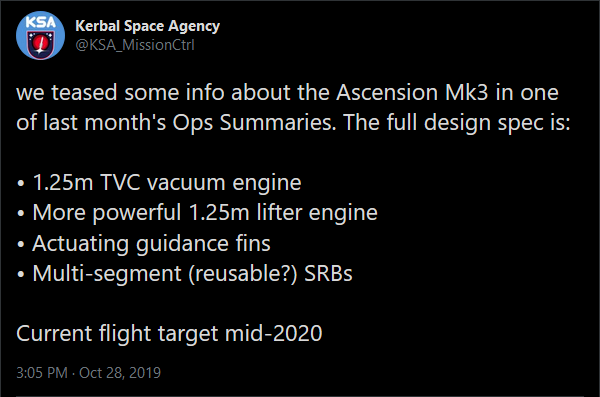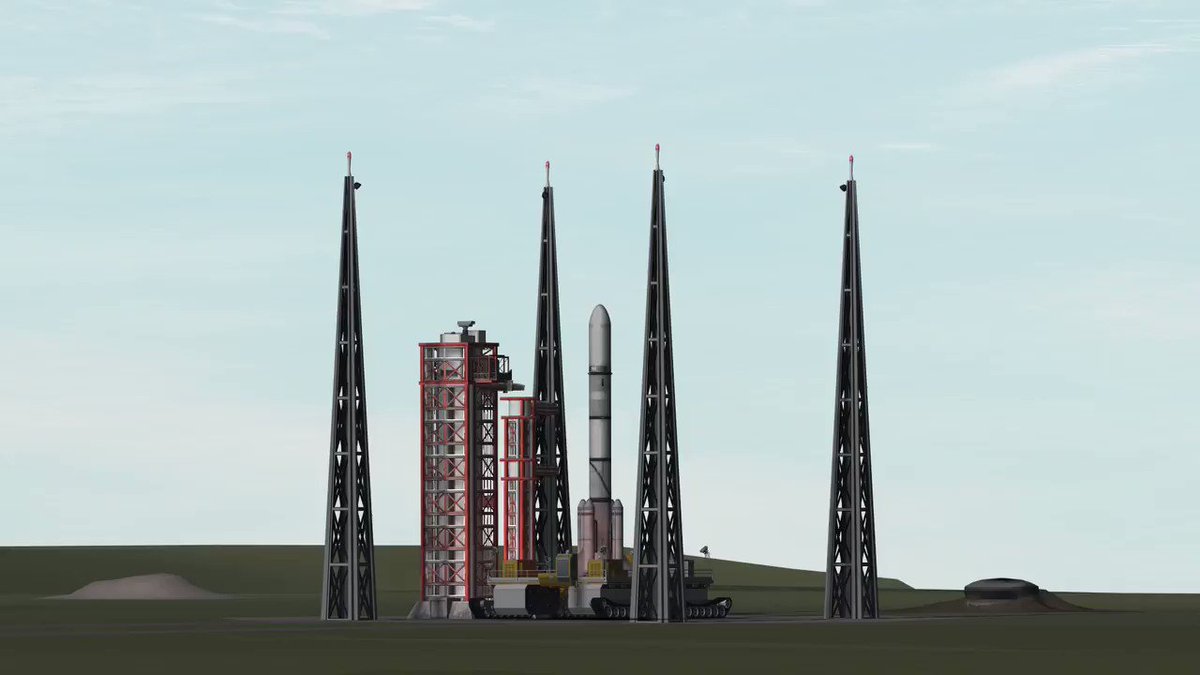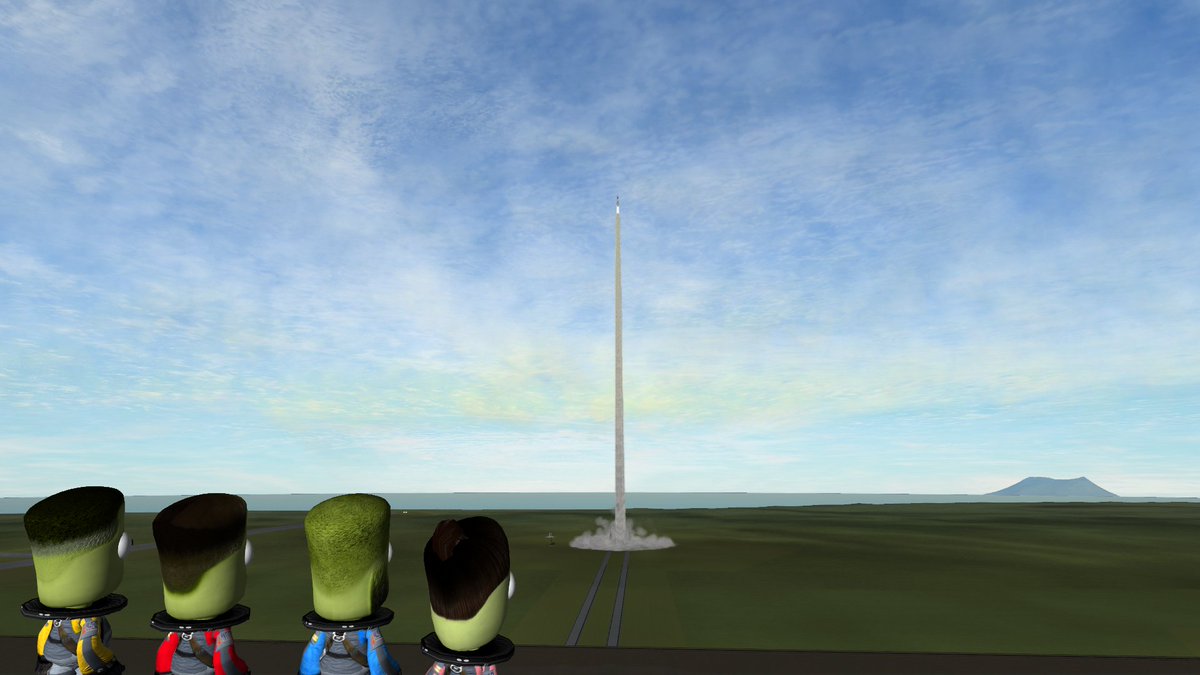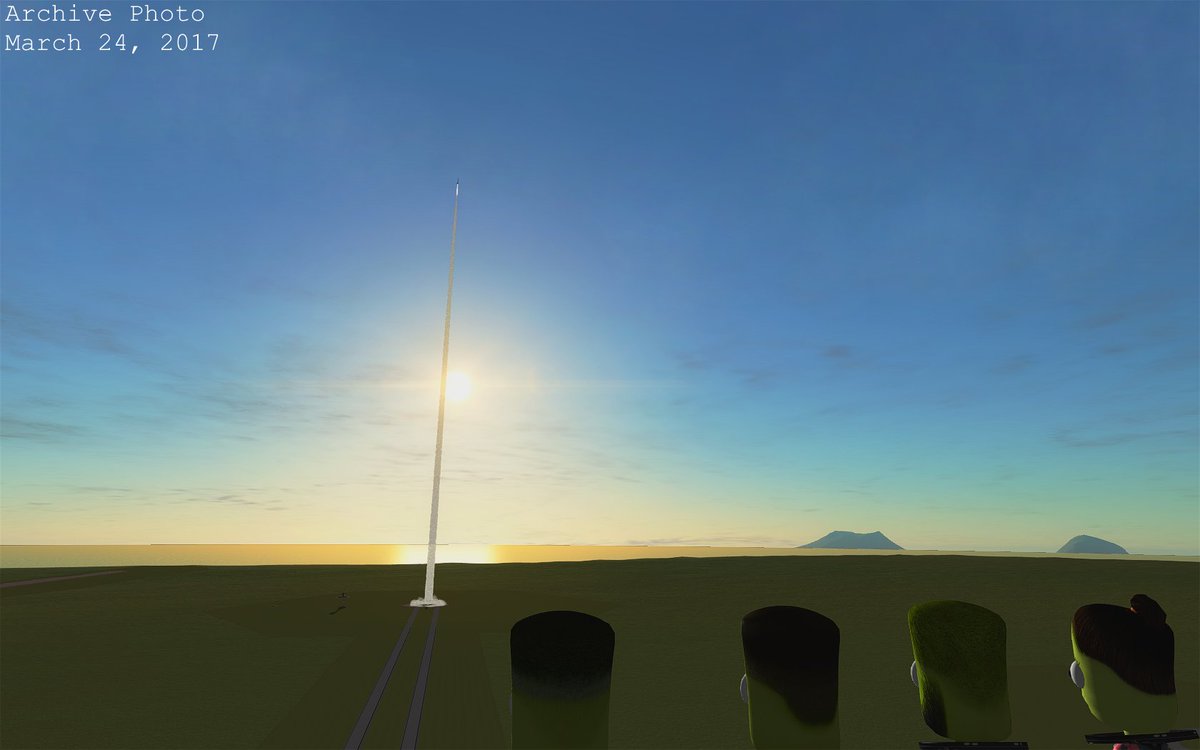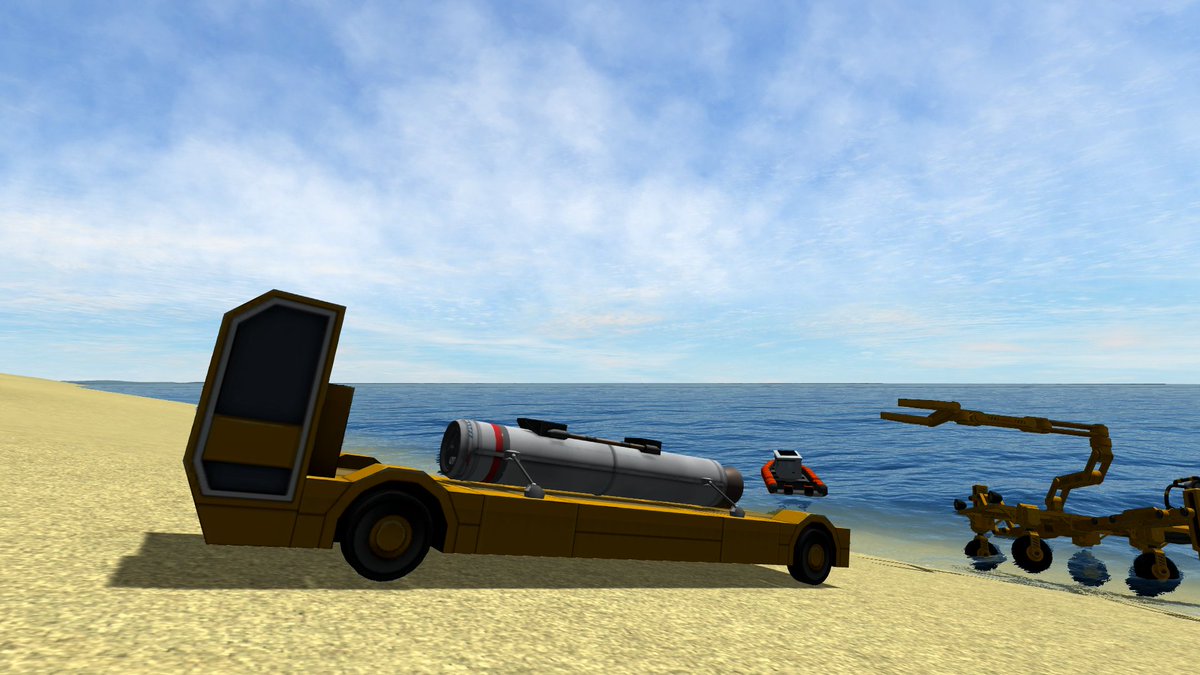The Asteroid Tracking Network discovered a new companion of Kerbin last week as the asteroid originally designated KUH-563(C) flew through Mun’s SOI while scopes were keeping a close eye on it for just such a passage. A few days later after more observations to nail down its orbit the Kerbin Astronomical Society made the formal announcement of the new moonlet, dubbed Alaba, which is ancient Kerbskrit for “second child”. Technically this is the 5th detected moonlet of Kerbin but in relation to our only other current companion Chikelu, the name fits.
The observed orbit of Alaba showed that it had to have been a resident of the Kerbin system for several weeks to several months already. The eccentricity of its current orbit is 0.46, which is too small to be an original capture orbit. Over several encounters with Mun the asteroid has slowly developed a smaller and more circular orbit. How many? We don’t know and probably never will. The fact that it’s been around for a while though does make one wonder what else might be nearby we haven’t spotted yet!
After the initial orbit was locked down the data was plugged into the trajectory analysis tool we use here at the KSA to determine how Alaba would behave on future Mun encounters to try and predict its eventual fate. A captured object like this has three options: crash into Kerbin, crash into Mun or get ejected back out of the system. After 58 more encounters is looks as if Alaba will eventually smash into the southern hemisphere of Mun in early 2021.
Detailed Trajectory Analysis
In the ~4.3 years Alaba is projected to be with us it will encounter Mun 58 times, and each time it does so its orbit around Kerbin will be slightly altered by Mun’s gravity. In the plot above to the right you can see how these changes affect the shape and inclination of the orbit (the dashed vs. solid lines mean nothing). At times it appears that Alaba is working its way back out of the system as the orbit size increases, but then it retracts back inwards again. Here are two more detailed looks at the encounter orbits to allow you to see how they are changed over time.
As you can see there are several periods of expansion/contraction of the orbits; in 2021 Alaba’s orbit expands outwards almost as far as it was back in 2017 but then pulls back and eventually sends the asteroid crashing into Mun. The reason Alaba is never able to escape back out of the Kerbin system or come crashing into Kerbin is thanks to having numerous encounters with Mun that happen in less than one orbit. So it encounters Mun on one side of Kerbin, then swings around and passes through Mun’s SOI again on the other side of Mun’s orbit. This interaction juggles the asteroid around until one side of its trajectory gets pushed outside the other side of Mun’s orbit, and the cycle sets up to repeat. The longest period in which Mun bounces the asteroid back and forth happens over 6 days in October 2020, where through 8 encounters it transitions from one side of Mun’s orbit to the other.
During this period it does seem like Alaba nearly settles into a sort of resonance with Mun – we never contemplated the possibility of an asteroid staying in orbit while being shepherded by Mun in such a manner, although that could be similar to the Trojan population of asteroids that lead and trail Jool thanks to its gravitational influence. Ultimately though Mun is not able to guide this asteroid well enough to stay in a stable orbit. Still, it did manage to make the trajectory of Alaba nearly circular, at one time bringing down its eccentricity to just 0.049419. Overall though there wasn’t any really stable trend in orbital elements over time, as these graphs show.
Now comes the time for the real test: to see how well these predictions play out over the coming months and years to help us further refine our trajectory software and make it possible to confidently plan long-term missions. The last time we attempted to do this, with Meeny, the initial predictions were thrown out within a month when new orbital data after back-to-back encounters showed the asteroid to be on a different trajectory than predicted. The next encounter with Mun for Alaba is scheduled for November 17th, after which new observational data will be plugged in and we’ll see if the updated propagation has the asteroid still ending up in the same place come 2021.







